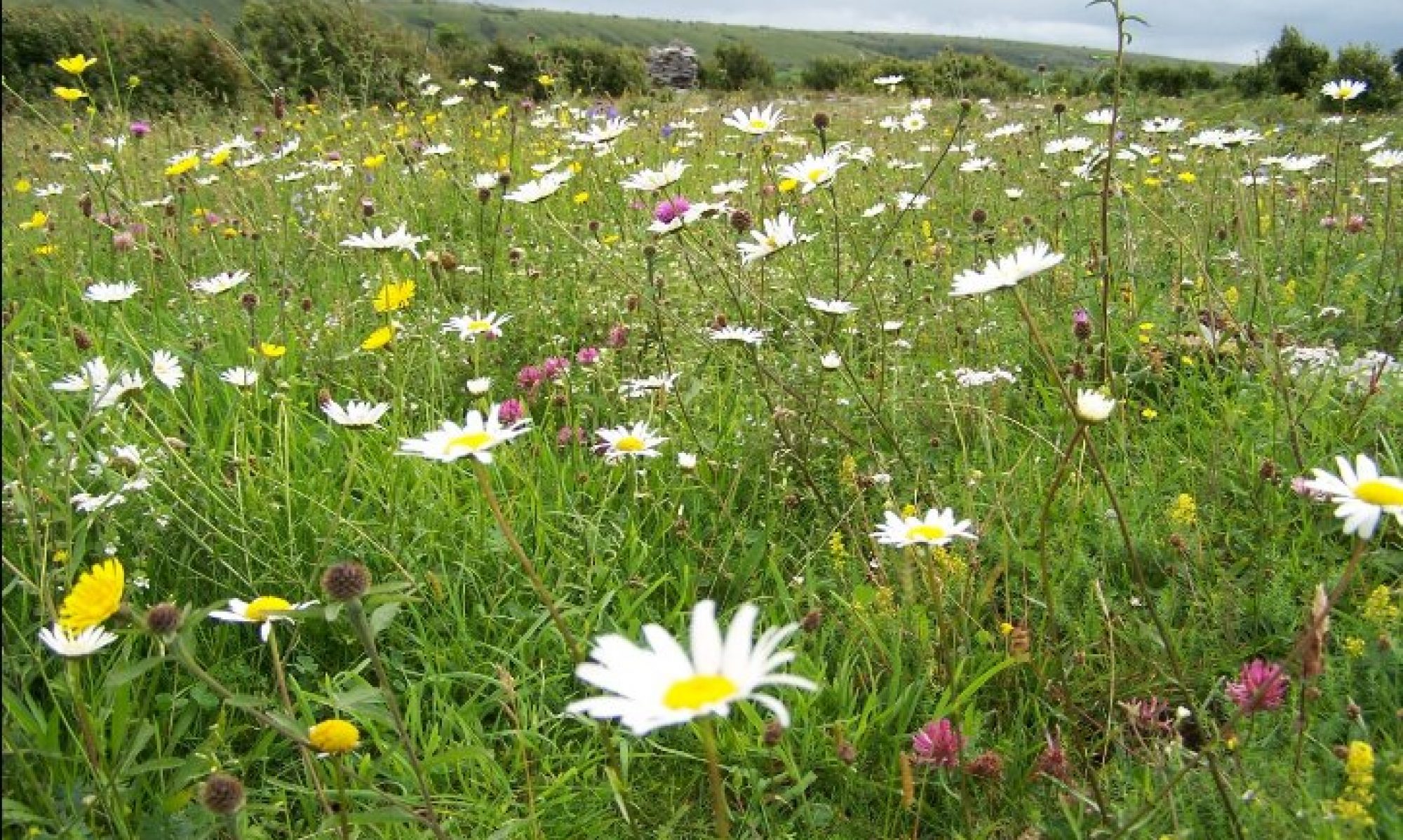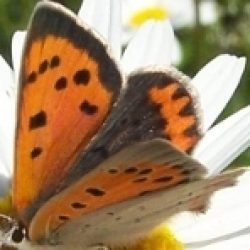Ivy Hedera helix is an evergreen climber found in hedges, on trees, walls and on the ground, in shaded places. The plant flowers mainly during August, September and October. The value of Ivy for pollinators lies in its abundance in the landscape and the timing of its flowering. By early September, most grassland herbs have finished flowering. Warm, sheltered, lightly managed hedges containing Ivy in flower are ideal places for pollinators, and these are well worth checking in sunny weather during autumn. Ivy hosts nocturnal insects, too. Moths like Herald and Red-green Carpet take nectar during darkness, while hoverflies, bees, wasps, flies and butterflies visit during the day.
Here are some species that use flowering Ivy.
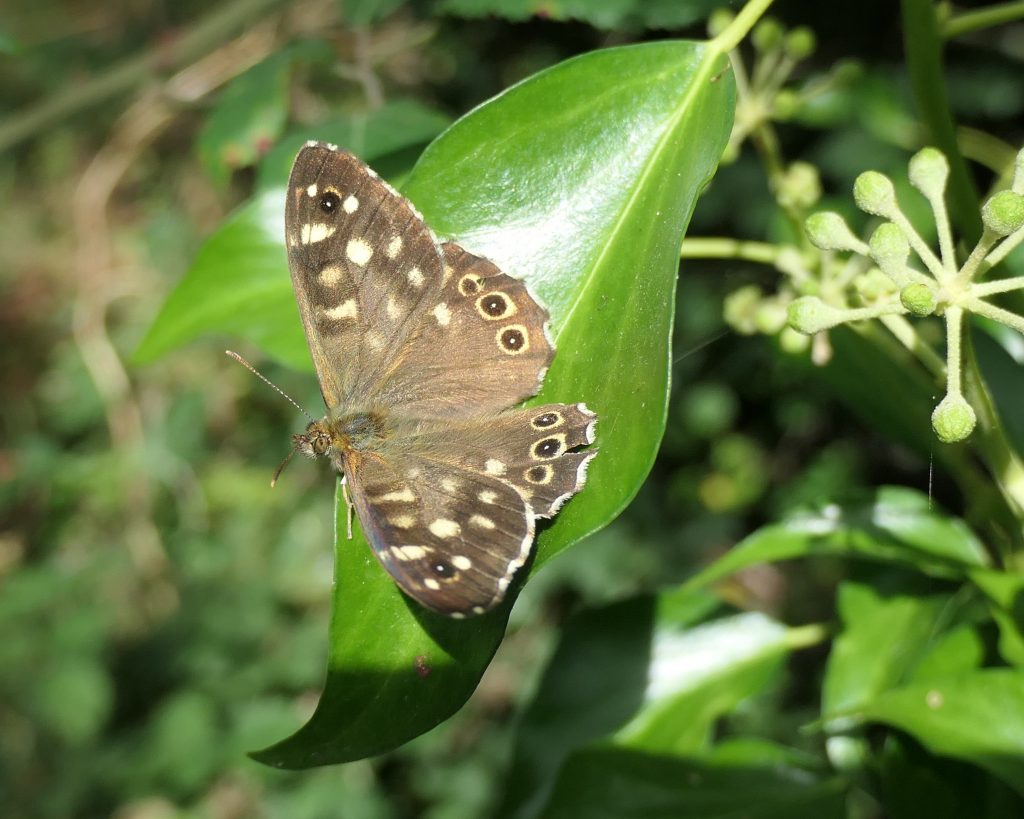
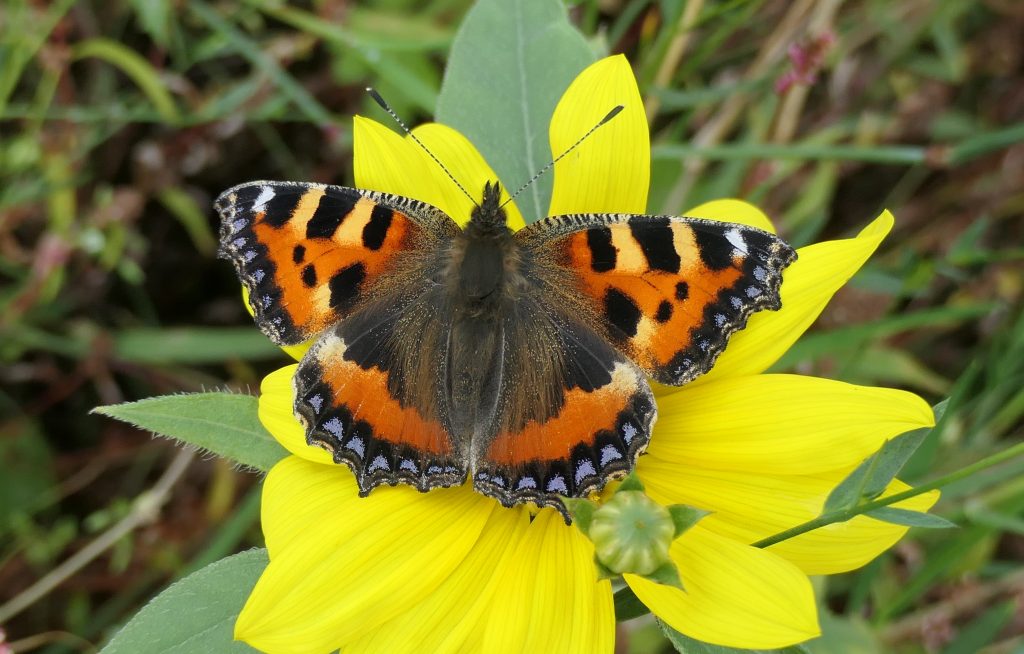
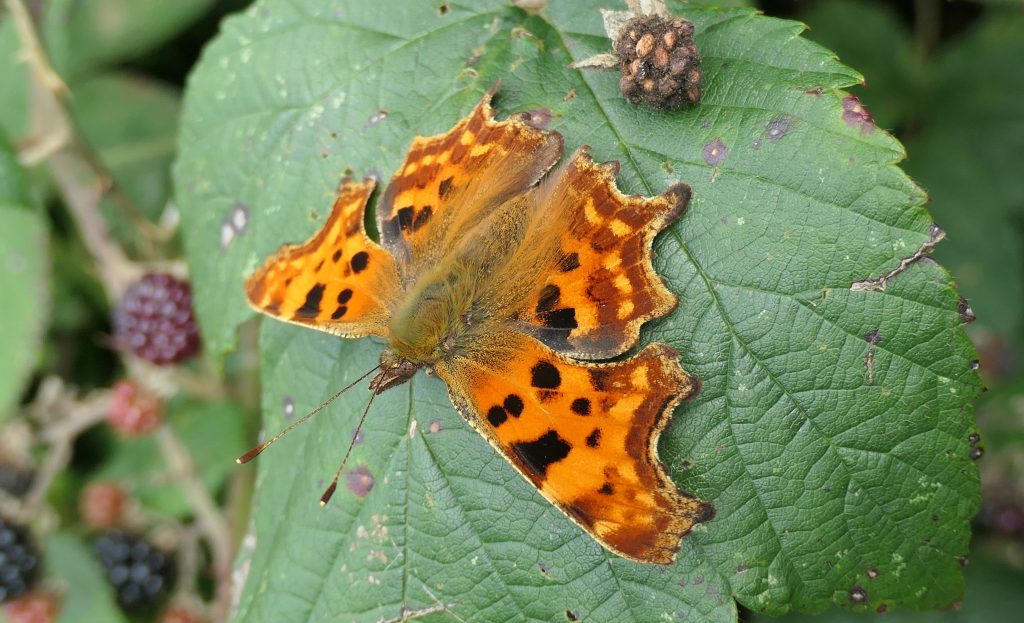
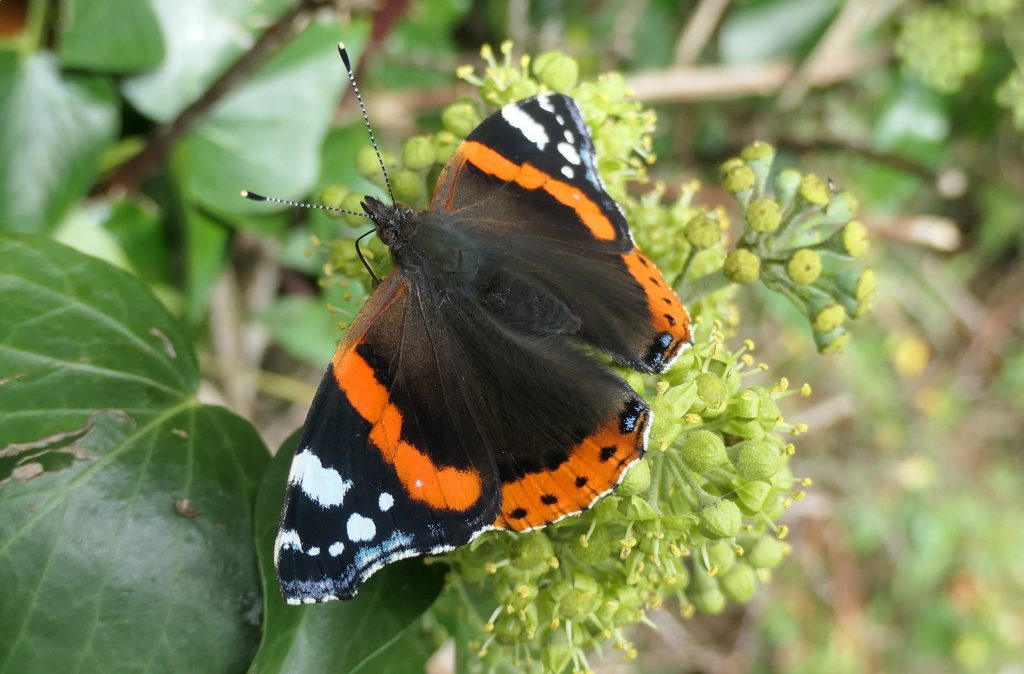
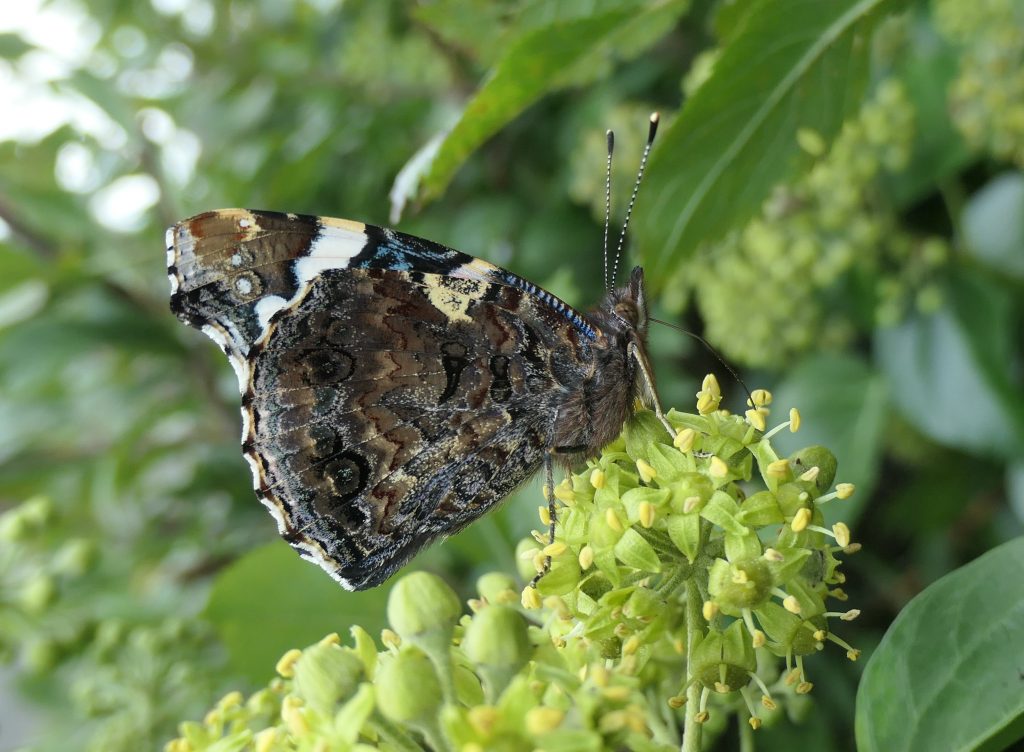
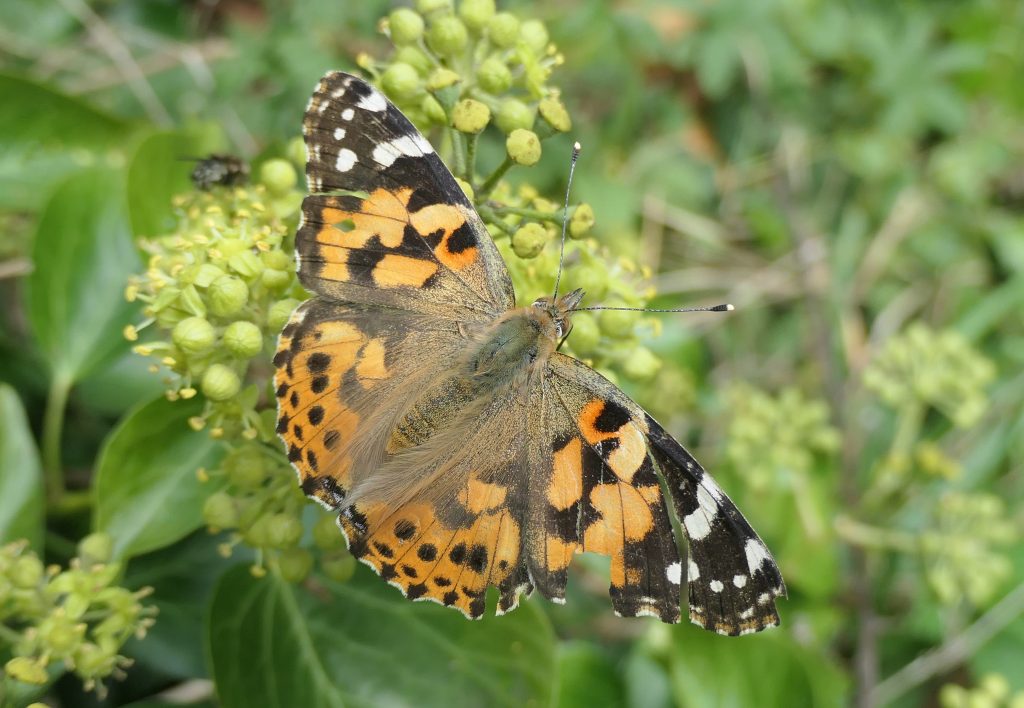
A tip for nature lovers in September and October is to check the flowering Ivy in coastal areas. Red Admiral and Painted Lady will gorge on Ivy before flying seaward. Hundreds have been observed on Ivy on the south Wexford coast (Slade) in autumn. It provides food and roost sites for pre-migration butterflies.
Ivy is also used by overwintering insects. The Brimstone is adapted to use Ivy. Its wing shape imitates Ivy leaves, even including blotch marks on the underside of the wings.
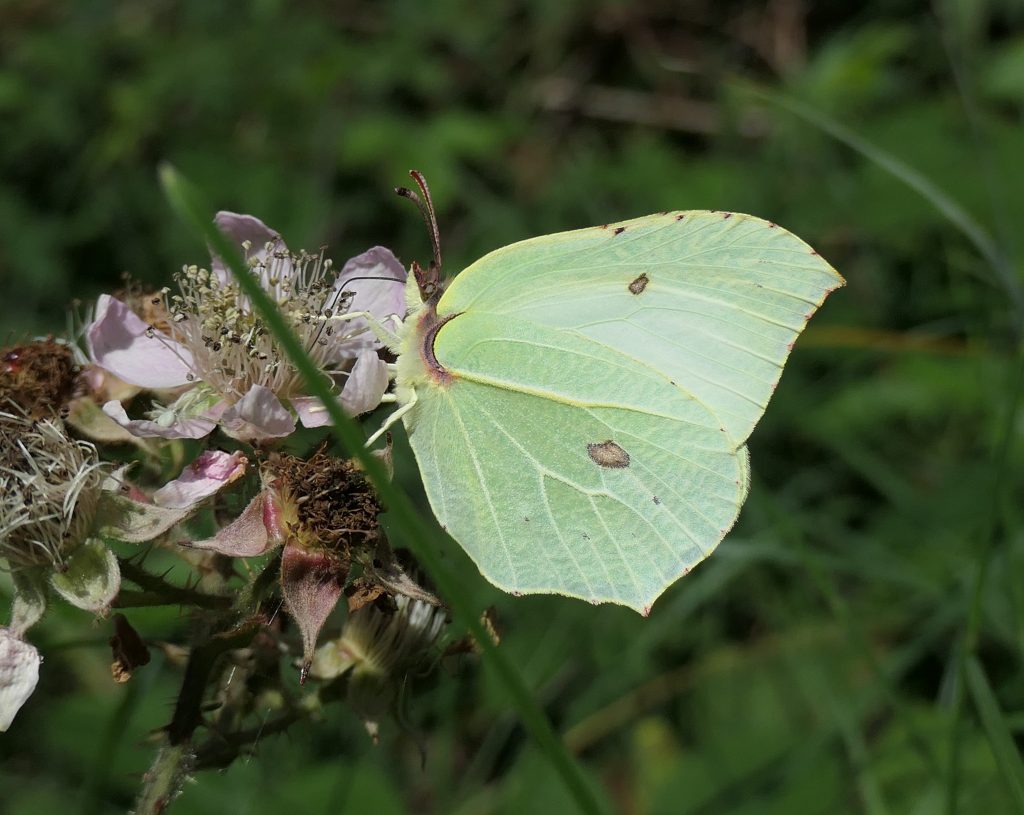
Comma may use it too. The Comma underside has a leaf-like appearance, mimicking a dead oak leaf. Dense Ivy will hold dead leaves from other plants. Being evergreen, it conceals and shelters.
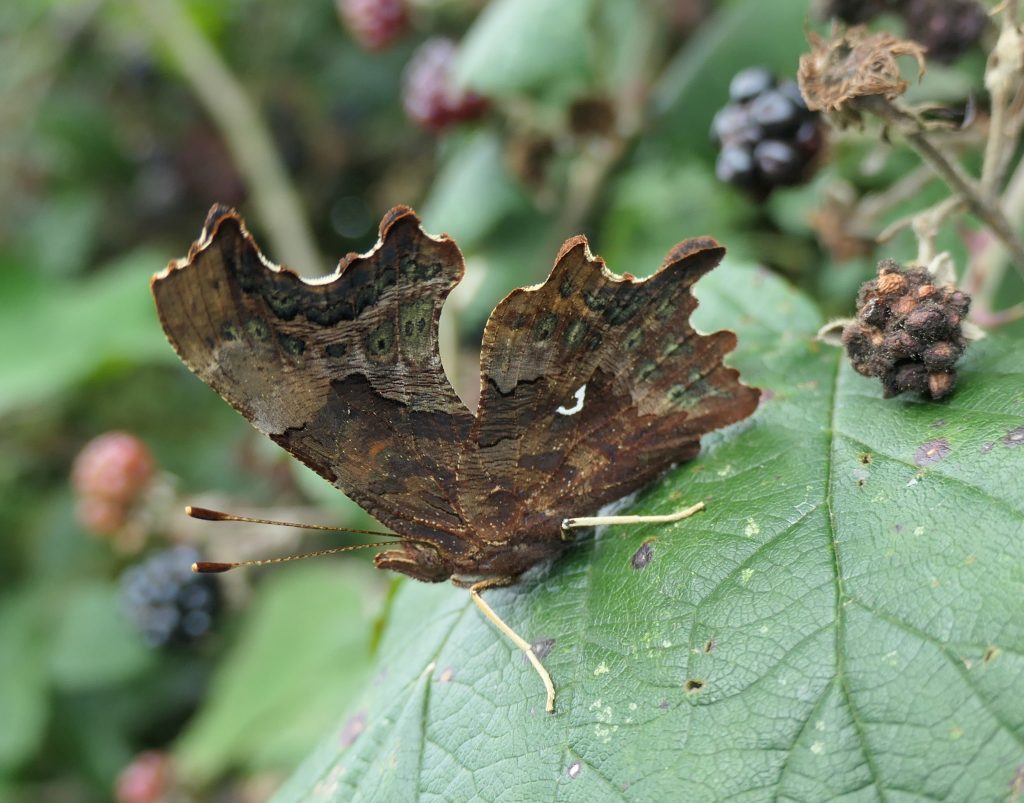
Ivy is also used as a larval foodplant by the Holly Blue. Its caterpillar relies on Ivy berries in late summer and autumn. Double-striped Pug, Yellow-barred Brindle, Willow Beauty, Dot Moth, Old Lady and Small Angle Shades are macro-moths that use Ivy as their larval foodplant, among other plants.
Allowing Ivy to flower is crucial if you want to help autumn insects. If it must be trimmed, do this in February, after the worst of the winter weather is over, but avoid trimming all your Ivy in any year. Variety helps biodiversity.
